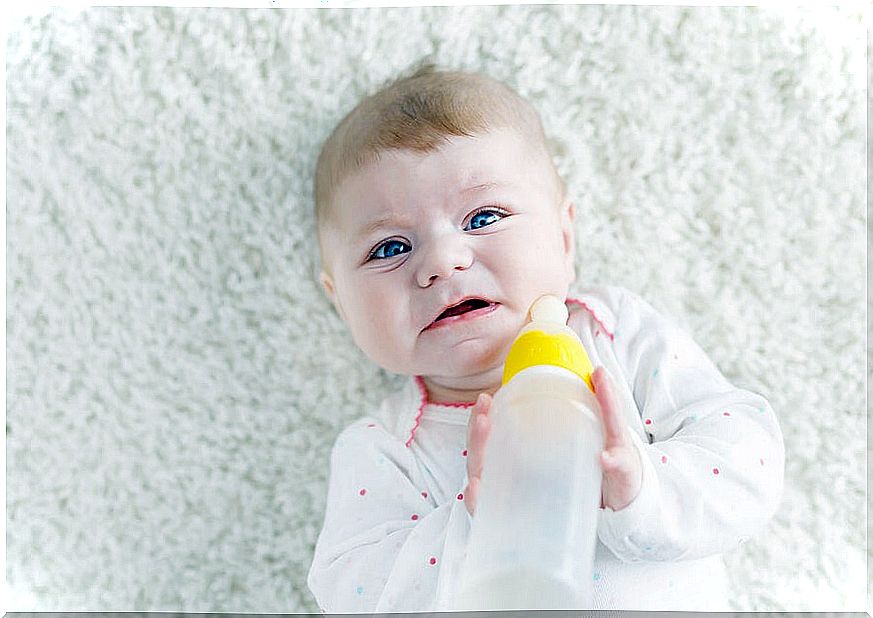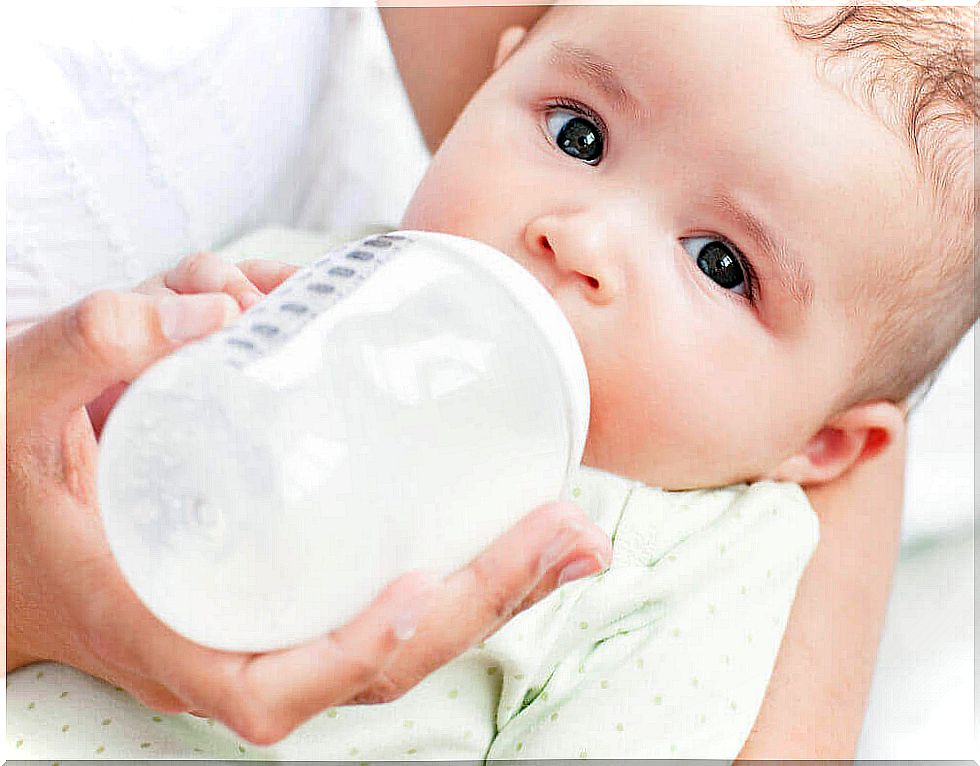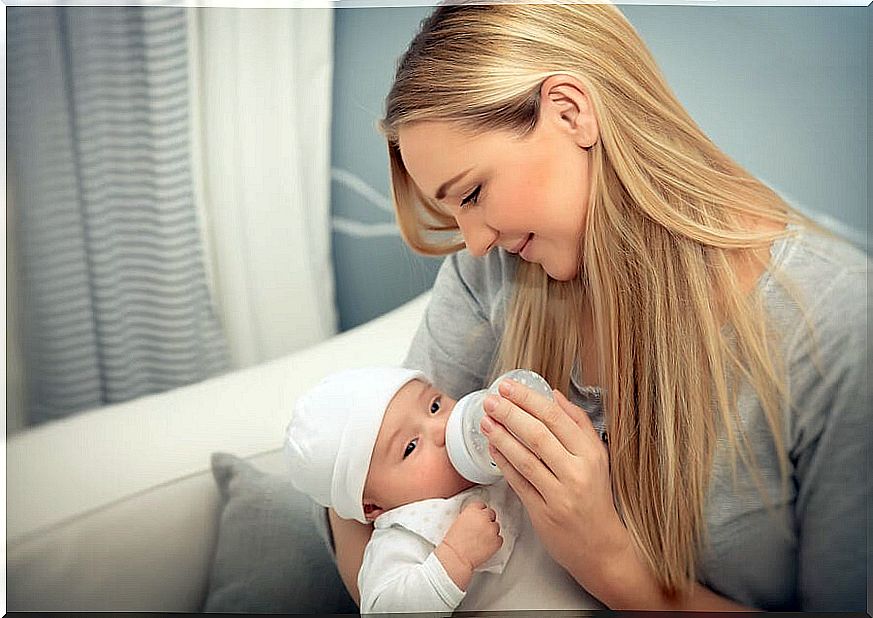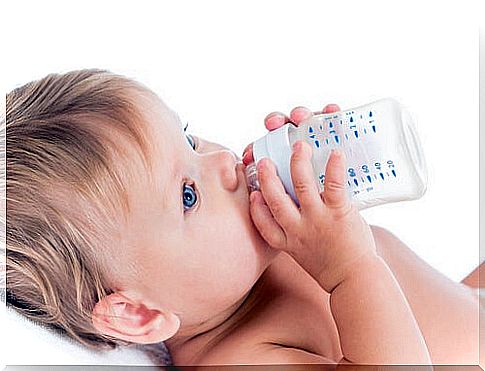What To Do If My Baby Does Not Want To Take A Bottle?

What to do if my baby does not want to take a bottle? This is a common question among mothers who want to stop or supplement exclusive breastfeeding. This transition may be difficult, so we must find a way to cause as little trauma as possible, both for the parents and the child.
Your doctor or other maternity expert may recommend bottle feeding just a month after your baby is born. In this period, mothers generally return to work after maternal rest, which is why they will not be available to breastfeed with the same frequency.
However, weaning him completely when he is so small can cause certain inconveniences. It is best to alternate breastfeeding with the use of the bottle so that it receives the essential nutrients that breast milk provides and complements them, in any case, with the baby milk available on the market.
Adding formula milk to your diet progressively is very important so that you get used to it and minimize the possibility of rejection.
Always remember that, in all cases, this process of dietary changes must be under the supervision of your pediatrician. He will be in charge of indicating the appropriate formula and evaluating the reactions that may occur.
Why doesn’t my baby want to take a bottle?
Newborns, babies enjoy and demand a lot of physical contact with their mother. Not having it, they get stressed and cry. This closeness makes them feel protected and safe; By adding a change that minimizes the sacred moment of breastfeeding in any way, it is understandable that they feel rejection.
The novelty they experience from both the texture and the suction technique is different from what you are already familiar with; thus, aversion is completely normal.

Modifying your diet from breast milk to formula is a determining factor in the infant’s likelihood of reluctance from the bottle. Factors like taste, texture, or even the way your body reacts to this new food may not be to your liking.
Because it is such a long and delicate process, patience plays a very important role. The little one will feel incomplete and strange having a new food and instrument to eat. Therefore, we leave you some suggestions to facilitate this transition:
Free discovery
Let your child discover the bottle, take it in his hands and bite the nipple. This introduction will undoubtedly facilitate your adaptation. For you to have a higher success rate, add a few drops of breast milk; thus, it will associate that new object with its food.
Make him feel warm
When feeding, it is advisable to hug him and wrap him with a garment that preserves the mother’s scent when she is not the one who gives him the bottle. You can speak to him in a low tone and in a loving manner so that he feels safe. Also, having someone else bottle feed you from the beginning will help with the weaning process.
Relaxing the baby to eat
Having your baby in good posture and with gentle back and forth movements will turn mealtime into a relaxing time. Therefore, you will start a good association with the bottle.
Acceptance time
The baby will not accept or get used to the bottle from one minute to the next. Therefore, we must arm ourselves with patience and not force him if he cries or rejects him. Let’s not fall into the despair of breastfeeding him again at the slightest sign of rejection; the time of acceptance and adaptation of the child must be respected.
A good method to speed up the acceptance of the bottle is that, instead of bringing the nipple directly to your child’s mouth, place it close and rub it on his lips so that he takes it whenever he wants. Always use the same bottle, bottle and techniques at different feeding times.

Temperature
Temperature is very important; the milk should not be cold or too hot. A good trick is to refresh the nipple with water; in this way, it is possible to make the contrast with the food temperature much more pleasant.
If you are one of those who is martyred with the phrase “my baby does not want to take a bottle”, you must have a good attitude and a lot of patience to get your child to accept the new feeding method.
Avoiding frustration at this fact is crucial. Weaning is a slow process that can produce many mood swings on both sides; even some mothers can become depressed when faced with failure.
Do not forget to follow these tips that will surely ease the burden in the process of accepting the bottle. Also, of course, consult a specialist to recommend the best food for your baby.
Remember that breast milk is the only one with all the necessary nutrients for your child. When looking for a substitute, we must have fundamentals and a medical opinion that supports the choice of the same.










